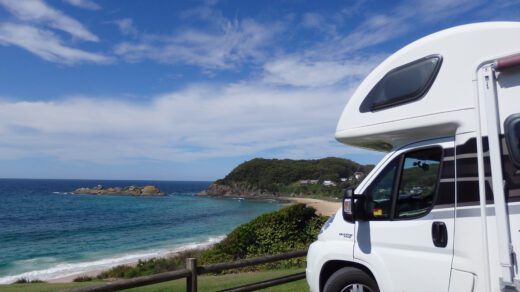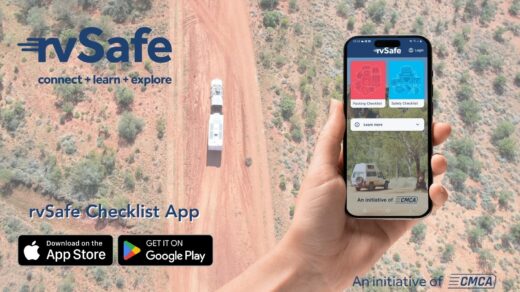Here are our top tips for driving an RV!
- Allow longer stopping distances – your RV will be bigger and heavier than a passenger car and it will take longer to stop. Therefore, you also need to leave a larger gap between yourself and the vehicle in front.
- Allow for slower acceleration. Once again, a bigger and heavier vehicle will be slower off the mark so make sure you take this into consideration. For example, when trying to turn across an intersection, you will need a bigger gap.
- If your vehicle is not handling well consider your vehicle weight, weight distribution and tyre pressures.
- Try and avoid quick sharp turns to prevent instability and rollovers. Whether you’re driving a motorhome or a car and caravan, neither will handle the same as a passenger car.
- Look further ahead than you would normally and factor in the environment including flora, fauna, and weather. Once again, your rig will not handle the same as your passenger vehicle.
- Don’t forget the added height, width and length of your vehicle. Be careful of low bridges or branches. If you don’t know the height of your vehicle – measure it before you head off! If merging lanes, allow for the extra length.
- Be comfortable using your mirrors. You will need to rely on them more with a larger vehicle. Take the time to set them up properly before you leave home.
- Take a wider swing when navigating corners as you will need more space. If your vehicle is over 7.5 metres, you can display a ‘Do Not Overtake Turning Vehicle’ sign and you are legally allowed to take up more than one lane to turn corners, intersections and roundabouts.
- Use a low gear when going down steep hills and avoid riding the brakes. If your brakes burnout, it quite simply means that you have no brakes. If you see a sign saying “Trucks Use Low Gear’ it may be a good idea to do the same in your RV.
- If you need to go slower than other traffic, move over so they can safely pass when it’s safe to do so.
- When using rest areas, think about other users and park at the end of the area. Don’t use truck areas unless there is an emergency.
- Know how to use your electric brakes. This applies to towing combinations towing over 2t. Adjust them correctly and know how to apply the trailer brake manually in case of sway.
- When in cities or towns try to plan ahead with regard to parking and driving so you don’t get caught somewhere you don’t fit.
- Use a spotter or reverse camera to help guide you when reversing, especially in tight spaces.
- Stay hydrated. Keep water handy to stay hydrated on longer drives.
- Rest often! Driving an RV is more tiring than driving a regular passenger car. Plan your rest stops and share driving when possible.
- Consider training. Enrol in an RV driving course to build confidence and learn specific skills.





